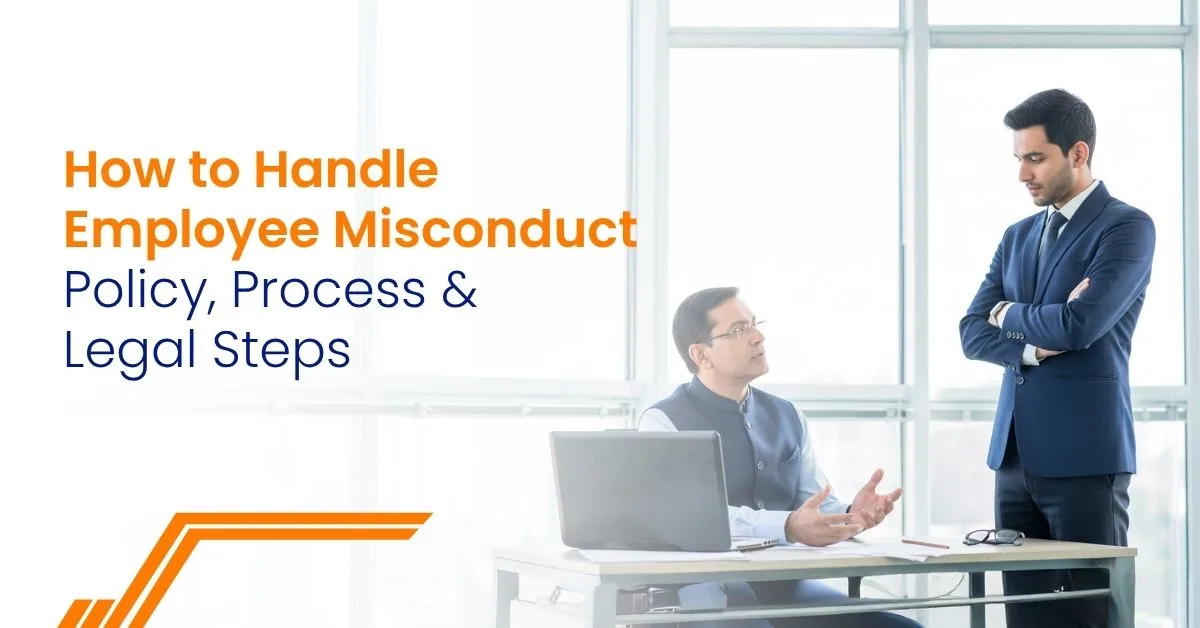Introduction to Employee Misconduct
- Employee misconduct refers to any behavior that violates company policies, workplace rules, or ethical standards, including sexual harassment and workplace misconduct. Such behaviour disrupts the professional work environment and can have a significant potential impact on the company’s reputation and operations.
- Disciplinary action is necessary to address misconduct and prevent it from becoming tolerated in the workplace. It acts as a corrective measure to ensure employees understand the seriousness of their actions and the potential consequences if the misconduct continues.
- A fair and thoughtful handling of misconduct maintains a safe, respectful environment and upholds the company’s reputation. Ensuring fairness in disciplinary measures helps protect both the employee’s rights and the organization’s interests.
- Understanding the causes, consequences, and solutions to employee misconduct is crucial for HR professionals and employers to handle disciplinary actions effectively. This includes conducting a formal investigation when necessary and involving legal counsel to ensure compliance with workplace policies and legal requirements.
Take control of your HR processes and ensure compliance with ease. Book a free demo of Bharat Payroll’s AI-enabled HR and Payroll solutions today to automate disciplinary tracking and streamline employee management.
Types of Employee Misconduct
- Gross misconduct includes severe offenses such as theft, fraud, and physical violence, which can lead to immediate termination. This category often involves serious safety violations or damage to company property.
- Serious misconduct violates company policies and threatens workplace safety, such as harassment, bullying, and falsifying documentation. These actions require prompt disciplinary measures to protect other employees and the workplace environment.
- Minor misconduct includes tardiness, extended breaks, and dress code violations, which can be addressed with verbal or written warnings. While less severe, such behaviour still constitutes unacceptable behaviour that needs correction.
- Online or digital misconduct includes unauthorized data access, cyberbullying, and misuse of company email, which can have severe consequences including reputational damage and legal action.
- Workplace theft, including merchandise, stock, and office supplies, is a form of misconduct that can be reported and addressed through disciplinary action policies and appropriate investigation.
Simplify managing diverse employee behaviours with Bharat Payroll’s comprehensive HR platform. Automate documentation and disciplinary processes effortlessly. Get started now.
Causes of Employee Misconduct
- Poor performance, lack of training, and unclear expectations can contribute to employee misconduct. Without clear expectations and guidance, employees may inadvertently engage in policy violations.
- Inadequate supervision, lack of accountability, and poor communication can also lead to misconduct. Effective human resources management and supervisory practices are essential to respond appropriately to emerging issues.
- Personal issues, such as financial problems or family conflicts, can sometimes contribute to employee misbehaviour. Employers should be aware of such potential factors and consider supportive measures when appropriate.
- Company culture and workplace environment can also play a role in encouraging or discouraging misconduct. A respectful environment with clear policies reduces the likelihood of unacceptable behaviour.
- Inappropriate behavior, such as sexual harassment, can be caused by a lack of respect for boundaries and a lack of training on workplace harassment. Regular training and clear communication of workplace rules are essential preventive measures.
Enhance your HR capabilities with AI-driven insights to identify and address root causes of employee misconduct. Discover how Bharat Payroll can support your team.
Consequences of Employee Misconduct
- Misconduct can lead to disciplinary actions, including verbal or written warnings, suspension, and termination. These disciplinary measures aim to correct the employee’s behaviour and prevent future incidents.
- Gross misconduct can result in immediate termination, while serious misconduct may lead to further disciplinary actions or a performance improvement plan.
- Misconduct can also damage the company’s reputation, lead to legal action, and result in financial losses. Employers must act promptly to mitigate reputational damage and ensure legal compliance.
- Employee misconduct can create a hostile work environment, affecting other employees and occupational health. Addressing such behaviour is vital to maintaining a professional work environment.
- Reputational damage can occur if misconduct is not addressed promptly and fairly, impacting employee morale and the company’s standing in the industry.
Protect your company’s reputation and ensure legal compliance with Bharat Payroll’s automated HR workflows. Streamline your disciplinary action processes and minimize risks. Explore our solutions.
Disciplinary Actions
- Disciplinary actions should be fair, consistent, and compliant with legal requirements, including providing employees with clear expectations and consequences. Documentation of all disciplinary actions is essential for future reference.
- A disciplinary action policy should outline the procedures for addressing misconduct, including investigation, documentation, and communication. This ensures transparency and consistency in handling employee misbehaviour.
- Employers should ensure that disciplinary actions are proportionate to the misconduct and take into account mitigating circumstances. Involving legal counsel can help ensure legal compliance and fairness.
- A written warning should be used to address serious misconduct, while a verbal warning may be sufficient for minor offenses. Additional warnings may be necessary if the misconduct continues.
- Immediate termination may be necessary in cases of gross misconduct, especially when safety violations or damage to company property occur.
Disciplinary Action Policy
- A disciplinary action policy should be easily accessible, well-documented, and communicated to all employees. It should clearly state the expectations for employee behaviour and the consequences of policy violations.
- The policy should outline the procedures for reporting misconduct, investigating allegations, and taking disciplinary actions. This includes specifying who is responsible for conducting formal investigations.
- Employers should ensure that the policy is fair, consistent, and compliant with legal requirements, including providing employees with clear expectations and consequences.
- The policy should also include procedures for appealing disciplinary actions and providing support for employees who have been affected by misconduct.
- Regular review and update of the policy can help ensure it remains effective and compliant with changing laws and regulations, including occupational health and safety standards.
Ensure your disciplinary policies are always up-to-date and accessible with Bharat Payroll’s centralized HR platform. Empower your HR team to manage policies efficiently. Learn more.
Progressive Discipline
- Progressive discipline involves a series of disciplinary actions, starting with verbal or written warnings, followed by suspension, and ultimately termination if the misconduct continues.
- The goal of progressive discipline is to correct employee behavior and prevent misconduct from becoming a habit, thereby maintaining a professional work environment.
- Employers should ensure that progressive discipline is fair, consistent, and compliant with legal requirements.
- A performance improvement plan can be used to support employees who are struggling to meet performance expectations, providing clear goals and timelines.
- Regular feedback and communication are essential in the progressive discipline process, helping employees understand expectations and improving conduct.
Facilitate progressive discipline with Bharat Payroll’s automated alerts and performance tracking tools. Keep your team aligned and informed. Request a demo.
Performance Improvement Plan
- A performance improvement plan is a formal document that outlines the expectations and goals for an employee to improve their performance.
- The plan should be specific, measurable, achievable, relevant, and time-bound (SMART) and provide clear consequences for non-compliance.
- Employers should ensure that the plan is fair, consistent, and compliant with legal requirements.
- Regular feedback and communication are essential in the performance improvement plan process to monitor progress and provide support.
- The plan should also include procedures for monitoring progress and providing support for employees who are struggling to meet performance expectations.
Company Policies and Procedures
- Company policies and procedures should be clear, concise, and easily accessible to all employees.
- Employers should ensure that policies and procedures are fair, consistent, and compliant with legal requirements.
- Policies and procedures should include procedures for reporting misconduct, investigating allegations, and taking disciplinary actions.
- Employers should regularly review and update policies and procedures to ensure they remain effective and compliant with changing laws and regulations.
- Policies and procedures should also include procedures for providing support for employees who have been affected by misconduct.
Centralize your company policies and procedures with Bharat Payroll’s digital HR management system. Make policy access and updates effortless for your team. Get started today.
Documentation and Record-Keeping
- Employers should maintain accurate and detailed records of all disciplinary actions, including investigations, warnings, and terminations.
- Records should be kept confidential and secure, with access limited to authorized personnel.
- Employers should ensure that records are accurate, complete, and up-to-date, including providing employees with clear expectations and consequences.
- Records should include details of the misconduct, the disciplinary action taken, and any subsequent actions or appeals.
- Employers should regularly review and update records to ensure they remain accurate and compliant with changing laws and regulations.
Keep all disciplinary records organized and secure with Bharat Payroll’s compliant documentation features. Protect your organization and streamline audits. Request a free demo.
Communication and Feedback
- Employers should communicate clearly and effectively with employees throughout the disciplinary process.
- Feedback should be regular, constructive, and specific, including providing employees with clear expectations and consequences.
- Employers should ensure that communication and feedback are fair, consistent, and compliant with legal requirements.
- Employers should also ensure that they are providing support for employees who are struggling to meet performance expectations.
- Communication and feedback are essential in the disciplinary process, including providing employees with clear expectations and consequences.
Sample Warning Letter
- A sample warning letter should be used as a template for addressing misconduct, including providing employees with clear expectations and consequences.
- The letter should be specific, clear, and concise, including details of the misconduct and the disciplinary action taken.
- The letter should also include procedures for appealing the disciplinary action and providing support for employees who have been affected by misconduct.
- Employers should ensure that the letter is fair, consistent, and compliant with legal requirements.
- The letter should also include a statement acknowledging receipt and understanding of the warning, including an employee signature for future reference.
Conclusion
Employee misconduct poses significant challenges to maintaining a professional and respectful workplace. Addressing such behaviour promptly and fairly through a well-defined disciplinary action policy is essential to protect the company’s reputation, ensure legal compliance, and foster a positive workplace environment. By implementing clear workplace policies, conducting formal investigations when necessary, and applying progressive discipline consistently, employers can correct unacceptable behaviour and support employee improvement. Providing employees with clear expectations, opportunities for feedback, and performance improvement plans helps prevent misconduct from recurring. Ultimately, a fair and transparent disciplinary process benefits both the organization and its employees by promoting accountability, respect, and a safe, productive work environment.
Ready to transform your HR and payroll processes to better manage employee conduct?
Frequently Asked Questions (FAQs)
1. What is employee misconduct?
Employee misconduct refers to any behavior that violates company policies, workplace rules, or ethical standards, including actions such as sexual harassment, theft, or inappropriate language.
2. When should a warning letter be issued for misconduct?
A warning letter should be issued when an employee’s behaviour violates workplace policies or disrupts the work environment, especially after verbal warnings have not resulted in improvement.
3. What is the difference between gross misconduct and serious misconduct?
Gross misconduct involves severe offenses like theft or physical violence that may lead to immediate termination, while serious misconduct includes policy violations such as harassment or falsifying documents that require disciplinary measures.
4. How should employers handle allegations of employee misconduct?
Employers should conduct a formal investigation, gather relevant information, ensure legal compliance, and respond appropriately with disciplinary measures based on findings.
5. What is the role of progressive discipline in handling misconduct?
Progressive discipline involves escalating disciplinary actions, starting from verbal warnings to termination if misconduct continues, aiming to correct behavior while ensuring fairness.
6. Can an employee appeal a disciplinary action?
Yes, most disciplinary policies include procedures for employees to appeal actions they believe are unfair or unjustified.
7.How important is documentation in disciplinary actions?
Accurate and detailed documentation is critical for legal compliance, future reference, and ensuring transparency and fairness in the disciplinary process.
8. What should a disciplinary action policy include?
It should outline reporting procedures, investigation processes, disciplinary measures, appeal rights, and support mechanisms for affected employees.
9. How can employers prevent employee misconduct?
By establishing clear workplace policies, providing regular training, maintaining effective communication, and fostering a respectful and professional work environment.
10. When is immediate termination justified?
Immediate termination is typically justified in cases of gross misconduct, such as theft, violence, or serious safety violations that jeopardize the workplace or company property.






